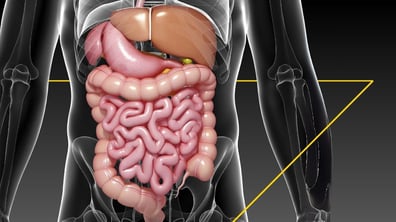Precision oncology and role of antibody-drug conjugates
Antibody-drug conjugates (ADCs) represent the next frontier in targeted cancer therapies. By combining the precision of monoclonal antibodies with the potency of cytotoxic drugs, ADCs offer a powerful solution to treating cancer with greater accuracy, minimizing damage to healthy tissues. Antibody-drug conjugates are composed of three essential parts:
- Monoclonal Antibody: Targets a tumor-associated antigen.
- Cytotoxic Payload: A potent drug designed to kill cancer cells.
- Linker: A chemical structure that connects the antibody to the payload.
This innovative combination allows for the precise delivery of the cytotoxic drug directly to cancer cells expressing specific antigens, significantly reducing off-target effects compared to traditional chemotherapy.
Antibody-drug conjugate Mechanism of Action: Cancer's trojan horse
ADCs function much like a modern-day Trojan horse, delivering potent cytotoxic agents directly into cancer cells while sparing healthy tissues. This highly targeted approach is a sophisticated multi-step process designed to maximize efficacy while minimizing systemic toxicity.
- Targeting and binding: The entry point
- The first step in the ADC mechanism is precision targeting. ADCs consist of a monoclonal antibody that specifically binds to antigens found on the surface of cancer cells. These tumor-associated antigens are typically overexpressed in cancer cells compared to normal tissues, allowing ADCs to selectively attach to malignant cells.
- Internalization: Sneaking behind the defenses
- Once the ADC binds to the target antigen, the cancer cell “accepts” the Trojan horse through receptor-mediated endocytosis. The ADC is internalized by the cancer cell, forming an endosome that transports it deeper inside. This internalization often occurs through a pathway known as clathrin-dependent endocytosis.
- Endosomal maturation and lysosomal fusion: The trap springs
- Once inside, the endosome matures and fuses with lysosomes, the acidic organelles filled with enzymes capable of breaking down cellular components. This environment is crucial for the next step—activating the hidden cytotoxic payload. The cytotoxic agent within the ADC waits until the proper conditions are met inside the lysosome.
- Payload release: Releasing the soldiers
- The cytotoxic payload is linked to the antibody by a linker that is stable in the bloodstream but cleaves in response to the acidic, enzyme-rich environment within the lysosome. Upon reaching this intracellular environment, the linker is cleaved, releasing the cytotoxic drug into the cancer cell’s cytoplasm.
- Cytotoxic action: Targeted action
- Once released, the cytotoxic agent exerts its lethal effects on the cancer cell. These agents typically induce apoptosis (programmed cell death) or necrosis, destroying the cancer from within. This targeted destruction minimizes collateral damage to healthy tissues, which is a key advantage over traditional chemotherapy.
- Bystander effect: Expanding the attack
- ADCs can also induce a “bystander effect,” where the released cytotoxic agent affects neighboring non-targeted tumor cells. This phenomenon increases the overall efficacy of ADCs by expanding the therapeutic reach beyond just the cells expressing the target antigen.
- ADCs can also induce a “bystander effect,” where the released cytotoxic agent affects neighboring non-targeted tumor cells. This phenomenon increases the overall efficacy of ADCs by expanding the therapeutic reach beyond just the cells expressing the target antigen.
Recent developments in antibody-drug conjugate approvals and efficacy
Recent advancements in the ADC landscape have reinforced their growing role in precision oncology. As of September 2024, 13 ADCs have received FDA approval for various cancer indications.1 These ADCs target key antigens across both solid and hematologic malignancies.
Increasingly, ADC are demonstrating their value in cancer care, particularly in combination therapies and their ability to target resistant cancer cell populations. Recent clinical trials show promising results when ADCs are combined with immune checkpoint inhibitors, enhancing anti-tumor responses. These combinations are opening new avenues for treating difficult-to-treat cancers.2
Emerging targets such as Nectin-4 and Claudin18.2 are broadening the therapeutic applications of ADCs. By improving their adaptability and overcoming resistance, ADCs are being explored as potential frontline options in cancer therapy.
ADC path in the theragnostic world: Antibody-radionuclide conjugate
ADC efficacy is sometimes limited by tumor target expression. Antigen expression can be misinterpreted due to tissue availability or limitation (histopathological interpretation) in size, preparation or it is evaluated with an immunohistochemistry antibody that recognizes a different epitope than the targeting antibody. Antibody-radionuclide conjugate (ARC) emerged as a theragnostic approach using diagnostic positron-emission tomography (PET), a precision imaging radiodiagnostic for patient selection. Using the same antibody for diagnosis (ARC) and treatment (ADC) could represent an option to maximize the benefit from ADC therapy confirming the antigen target.
The theragnostic strategy offers a noninvasive, whole-body, contemporaneous, and therapeutically directed approach to patient selection that overcomes many limitations of traditional immunohistochemistry (IHC). By employing pretherapy PET detection of target-expressing tumors after injection of an imaging radiodiagnostic (ARC), this approach allows for more accurate identification of patients who can benefit from ADC therapy while avoiding treatment of those with tumors that do not express the ADC target.
This advancement addresses several challenges in ADC therapy:
- Limited tumor target expression
- Disease evolution resulting in loss of sufficient antigen expression
- Risks associated with biopsies
- Outdated or unrepresentative biopsy samples
- Variability in histopathological interpretation of antigen expression
By combining the specificity of ADCs with the diagnostic power of ARCs, this theragnostic approach represents a significant step forward in precision oncology, potentially improving patient outcomes and resource utilization in cancer treatment.
Antibody-drug conjugate services: Advancing therapeutic precision
Recent advancements in ADC technology are improving both efficacy and safety, with three key innovations leading the charge.
- Site-specific conjugation techniques allow for the precise attachment of cytotoxic drugs to antibodies at predetermined sites, enhancing the stability and ensuring consistent drug delivery. This process improves pharmacokinetics, reduces off-target effects, and ultimately increases the therapeutic index by maximizing efficacy while minimizing toxicity to healthy tissues.
- Novel linker technologies are also critical in this advancement, enabling the controlled release of cytotoxic drugs within the tumor microenvironment. These linkers are designed to remain stable in circulation and release their payload only when they encounter specific tumor-associated enzymes or conditions, further enhancing therapeutic outcomes while minimizing systemic toxicity.
- Next-generation payloads are a third pivotal innovation. By leveraging novel mechanisms of action, such as dual-payload ADC platforms that target distinct cancer pathways, these new payloads offer increased efficacy against resistant tumors and reduce the risks of off-target effects. This innovation is key in addressing the limitations of earlier generations of ADCs, providing more powerful and adaptable treatments that can be customized for various tumor profiles.
Looking ahead, emerging trends like bispecific ADCs, Probody-drug conjugates, and immune-stimulating ADCs are setting the stage for the next evolution in cancer therapeutics, offering even greater specificity and the potential to harness the body’s immune system to fight tumors.
The antibody-drug conjugate market
Increasing cancer prevalence continues to drive the need for more targeted and effective treatments as the global incidence of cancer rises. Alongside this, the robust ADC research and development pipeline is a major growth driver. With numerous candidates in various stages of clinical trials, the pipeline is rapidly expanding.3
The Antibody Drug Conjugates (ADC) Market size was valued at USD 8.71 billion in 2023 and is expected to reach USD 24.70 billion by 2032, growing at a CAGR of 12.30% over the forecast period 2024-2032.
SNS Insider Research
A key contributor to the acceleration of ADCs is the increasingly favorable regulatory environment. Streamlining approval processes for targeted therapies has reduced the time to market and enabled faster patient access to innovative treatments. The regulatory expertise provided by partners like Precision for Medicine plays a crucial role in navigating these pathways efficiently.
Addressing the challenges and limitations in ADC development
While ADCs hold great promise, they face specific challenges related to manufacturing, regulation, and cost.
Manufacturing complexity
Due to their unique structural and functional characteristics, producing ADCs requires highly specialized facilities, which can create scalability challenges. Precision for Medicine manufacturing teams have a proven track record of planning, building, and maintaining manufacturing facilities, capital expansions, and technical operations. These capabilities can ensure that ADCs are produced at the highest standards while supporting efficient scale-up to meet market demand.
Regulatory hurdles
The regulatory requirements for ADCs are stringent and can be complex as there are no dedicated regulatory guidelines specifically for ADCs. Instead, ADC developers must navigate existing harmonized international guidelines from organizations such as the International Council for Harmonisation (ICH), which provide a framework applicable to both small and large molecules. Working with Precision’s global regulatory affairs team, sponsors benefit from input across the drug development lifecycle to streamline approval processes and regulatory success.
Cost considerations
High development and manufacturing costs can limit the accessibility of ADCs. By assembling multidisciplinary teams and deploying advanced screening and bioanalytical technologies, Precision reduces the time spent on each phase of development. Our approach to clinical development planning optimizes strategic recommendations to infuse efficiency into every step.
Delivering ADC Success with Precision
Precision for Medicine offers unparalleled value to sponsors developing ADCs. Through cutting-edge biomanufacturing services, comprehensive regulatory support, and streamlined clinical trial planning and execution, we help ensure that ADC therapies reach the market efficiently and safely.








